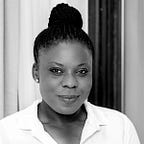Six Hot Areas to Explore in Architecture post-International Dialogues
I went down to London from Birmingham on Tuesday [19 April 2016] evening after work. Admittedly, I missed the first 40 minutes of Kunlé Adeyemi’s presentation but I was there for the most part of the entire evening’s event. I even had the opportunity to join a relatively long queue with others to meet Kunlé at the end of the event. Unfortunately, there wasn’t enough time to talk about The Architects’ Project when I finally met him, neither was there time to take a ‘selfie’ photo — maybe next time.
On the train journey back home, I looked through my notes and picked the main points from the evening that are relevant, not just to building communities, but also to some of the issues we explore at The Architects’ Project.
1. Climate, Catastrophe and Creation
These were three topics that Kunlé noted with Chris Michael in the introduction to the discussion session. Climate, catastrophe and creation are general topics in the sense that they can be interpreted in many ways, and in many fields of practice.
2. What is Architecture?
I was fully switched on when Kunlé talked about “how the next meaning of architecture that addresses the challenges of our time” could be discovered. Most of us haven’t started to really delve into finding out our own meaning for it yet. “What is architecture?” keeps reappearing in recent dialogues that I find myself in. As a body of professionals, I’m not sure if architects have coined the definition of architecture within the challenges and resources that we have now. Perhaps it is about continuously seeking an answer rather than having a definitive answer.
3. Humanitarian Architecture
Humanitarian architecture isn’t entirely about temporary structures. Perhaps more about architecture that responds to current crises and how these crises also set challenges for us to address. Looking at current affairs, that architecture could reflect migration activities or refugee conditions. This could present scenarios for new architecture; one that facilitates how the people affected by the situation sustain themselves, or how a new world can be created away from the one that is left behind by claiming and/or sharing new territories. All that said, I’m no expect in humanitarian architecture. My keywords for this are migration, territories and contested spaces.
4. Why Modular?
This was a question from Chris Michael to Kunlé. Kunlé’s response echoed what a good number of people I have met in architecture often resort to as a solution to social and economic issues. With inclusive, innovation and community in mind, using modular systems could mean the people involved in the making process (often the users of the project if it is a community project) can reapply the knowledge gained from the first build to the next build. Here, the making process becomes part of the project itself. For sure, every project must be placed in a particular time, within a particular society, to meet a particular brief. And that means, we should leave some possibility for future communities and users to “flex” their own creative and technical skills when we are introducing modular systems in our work.
5. Affordable Housing
One question from the audience referenced affordable housing in Africa. Affordable housing is a term that must be well-defined within a given context. The ambiguity of it alone can make you wonder why it exists at all; especially in a subject (housing) that is internationally relevant. With its political connotations varying from place to place, can we do without ‘affordable housing’ as a term in housing?
6. Where are the African Architects?
“Over here!” is what I wanted to say when a question sprung out asking “where are the African Architects?” The main question was centred on why renowned projects in Africa are led more so by foreign architects than by African architects. I would have answered “it is political.” But Kunlé’s point of view suggested that we don’t have enough trained professionals in Africa (or in the local communities of these projects); and that he adopts an approach where he taps into the community knowledge and skills by engaging with the community. I’m not sure I agree entirely that we don’t have enough local architects in Africa. I can testify that this is not the case. At least not in Ghana. But one thing is for sure: you don’t have to be African to take on projects in Africa. What you know about the place is more important, especially when the project is for a community use.
About International Dialogues — Kunlé Adeyemi
International Dialogues with Kunlé Adeyemi was part of the ‘Creation from Catastrophe — How Architecture Rebuilds Communities’ exhibition at the RIBA earlier this year. At this talk session, Architect, urbanist and designer Kunlé Adeyemi was joined by The Guardian’s deputy Cities editor Chris Michael. Questions were invited from the audience after Kunlé presented his practice and approaches using a selection of his projects. The discussions explored “how we can think differently about building with and on water.” It was great to also explore how we can think differently about building communities.
Reference: www.architecture.com
You can read more about Kunlé Adeyemi’s projects at NLÉ:
